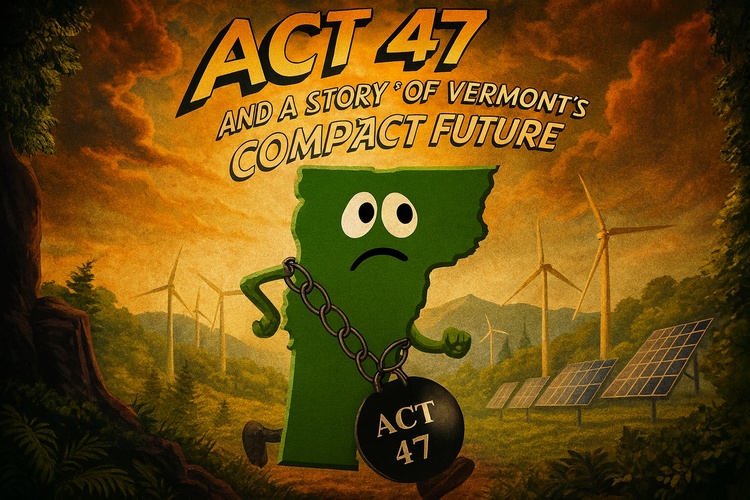Maine’s harm-reduction network has become the center of a national uproar after reports confirmed that “boofing kits”—supplies for rectal drug administration—have been distributed through publicly supported health programs. The revelation has ignited debate over how far “safer use” strategies should go, how they’re funded, and whether similar measures could reach Vermont.
What the kits are and who distributes them
According to The Maine Wire and The Post Millennial, the kits include a needleless syringe, saline, lubricant, alcohol wipes, and instructions. Their stated purpose is to reduce infection and vein damage among users who can no longer inject intravenously.
The chief distributor is Maine Access Points (MAP), a Bangor-based nonprofit that manages syringe-service and harm-reduction programs statewide. MAP’s own materials describe “safer-use supplies” as part of its mission to “support people who use drugs in making safer choices.” Portland’s municipal public-health division has also been cited for distributing similar kits through its needle-exchange site.
Following the money
MAP’s 2024 IRS Form 990 lists $1.89 million in revenue and $1.74 million in expenses, according to CauseIQ. Its grants come from the Maine Health Access Foundation, the Elmina B. Sewall Foundation, and national groups such as NASTAD (National Alliance of State and Territorial AIDS Directors).
While no Maine budget line explicitly funds “rectal-use kits,” MAP and partner agencies qualify for federal “State Opioid Response” (SOR) and HHS Overdose Data to Action (OD2A) grants, which allow spending on “harm-reduction supplies” under state oversight. Some opioid-settlement dollars—the state’s share of pharmaceutical lawsuits—also flow to local programs for overdose prevention, behavioral health, and recovery.
Together, these public and private funds make it plausible that taxpayer and settlement dollars indirectly support the purchase and distribution of the controversial kits.
The harm-reduction paradox
Supporters argue the kits lower infection risk and keep users alive long enough to seek treatment. Critics counter that the approach simply perpetuates addiction while consuming public resources. Both sides acknowledge the optics: a publicly funded program supplying the means for rectal narcotics use.
Medical research underscores the contradiction. Rectal dosing avoids puncture wounds but does not prevent overdose. Absorption is inconsistent—depending on drug type, solution pH, and rectal condition—often prompting re-dosing to chase a high comparable to injection. A case report in Frontiers in Pharmacology shows that such patterns lead to higher cumulative exposure and greater risk.
Repeated rectal contact with street-drug mixtures containing fentanyl, xylazine, and levamisole can cause ulceration, chronic inflammation, and infection, according to MDPI Case Reports in Medicine. Tolerance still escalates, and systemic organ damage continues. In effect, the practice may relocate the injury rather than reduce it.
The numbers behind the policy
Maine recorded 716 overdoses in 2023, nearly triple its total from a decade earlier. Roughly 80 percent involved fentanyl. State officials justify aggressive harm-reduction spending as a life-preserving measure. In 2024, Maine announced $3.4 million in new harm-reduction grants, largely from federal and settlement funds, to expand naloxone and “safer-use” distribution statewide.
Whether “boofing kits” fall within those grants remains unclear; public records group them under “safer-consumption supplies.” Still, the overlap of public funding and controversial implementation has raised demands for fiscal transparency. Critics say the issue isn’t compassion—it’s accountability.
🍁 Make a One-Time Contribution — Stand Up for Accountability in Vermont 🍁
Vermont’s position
Vermont runs its own harm-reduction network—Vermont CARES, Turning Point Centers, and state-backed syringe-service programs. These distribute sterile syringes, fentanyl test strips, and naloxone but do not list rectal-use kits. The Vermont Helplink “Safer Use” page makes no mention of rectal administration.
However, the policy framework is shifting. In 2024, the Vermont legislature overrode Governor Phil Scott’s veto to authorize a two-year supervised-injection-site pilot in Burlington—the first in New England. If the philosophy behind harm reduction broadens as it has in Maine, similar supply distributions could follow without new legislation; the grants already permit it.
The moral and fiscal divide
Public-health philosophy has split over what some analysts call “pathological altruism”—compassion that inadvertently sustains harm. To one camp, preventing immediate death justifies nearly any intervention. To the other, harm reduction has mutated into “harm perpetuation”, extending addiction under the guise of mercy.
The stakes go beyond symbolism. Every dollar directed toward safer-use supplies is a dollar not spent on detox capacity, counseling, or workforce reentry. The question is whether “reducing harm” has drifted into subsidizing it.
Lack of transparency
For now, the Maine Department of Health and Human Services provides no itemized breakdown of supplies purchased through its grant sub-awards. Nonprofits like MAP file Form 990s but aren’t required to disclose spending categories. Without clearer oversight, taxpayers can’t know which share of their money sustains these kits or similar materials elsewhere.
Until legislators demand line-item transparency, Maine’s safer-use programs will remain a tangle of public grants, private foundations, and good intentions—funding that may soon find its way across the border to Vermont.
Dave Soulia | FYIVT
You can find FYIVT on YouTube | X(Twitter) | Facebook | Parler (@fyivt) | Gab | Instagram
#fyivt #maine #harmreduction #vermont
Support Us for as Little as $5 – Get In The Fight!!
Make a Big Impact with $25/month—Become a Premium Supporter!
Join the Top Tier of Supporters with $50/month—Become a SUPER Supporter!









Leave a Reply